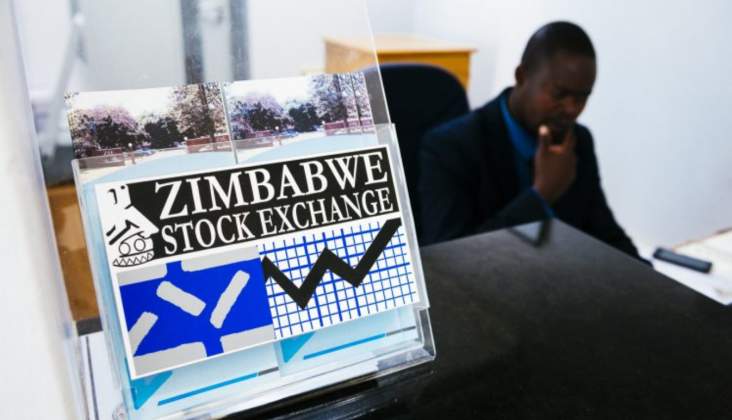Unrelenting borrowing pushes Zimbabwe to edge
Zimbabwe is teetering on the brink of a debt crisis as the country’s borrowing binge shows no signs of slowing down, economists have warned.
According to official figures, Zimbabwe’s debt skyrocketed from about US$17,7 billion in September last year to the current US$21 billion, or 96,7 percent of the gross domestic product (GDP), largely driven by domestic debt,
Domestic debt ballooned from US$5,2 billion in 2022 to US$8,1 billion in 2023, fuelled by a massive US$2,84 billion Treasury bond issuance.
This includes US$924 million to settle legacy Reserve Bank of Zimbabwe debts and US$1,92 billion to capitalise the Mutapa Investment Fund.
Over the past six years, the public debt has doubled, surging from US$10 billion in 2018 to over $21 billion currently.
“The pace at which we are acquiring debt is alarming,” said Professor Gift Mugano. “We have surpassed the SADC debt-to-GDP threshold of 60 percent, with our debt now close to 100 percent of GDP.”
Prof Mugano expressed concern over the country’s inability to secure long-term financing due to its junk status, a direct consequence of the ballooning debt. This, in turn, is hindering economic growth and competitiveness.
“This is an area of concern,” said Prof Mugano. “I want to think and argue that it’s important for Government to put a stop on the pace at which we are acquiring our debt. We have to raise our pace and momentum in finding a solution to debt clearance, debt resolution.
“But you see, naturally, if one is serious about clearing public debt, you also have to start by stopping accruing new debt.
“How are you going to build a moral suasion among those who want to support us to get a debt resolution?
“It does not make any sense to say you want to have a debt resolution, but you are acquiring new debt every now and again at a faster rate.”
Prof Mugano noted Zimbabwe was a signatory to the SADC finance investment protocol, which requires member states to maintain their debt-to-GDP ratio to around 60 percent to avoid challenges of a contagion effect or a spillover effect of that debt.
Member states were supposed to domesticate that protocol and also make sure that their public finance act is aligned accordingly.
“Imagine if South Africa goes into unsustainable debt levels in the same manner in which we are as a country,” said Prof Mugano.
“What it would mean is that member states also in the region would suffer the consequences because South African economy will begin to shrink and they will also have difficulties in attracting capital, which means they do not have the capacity to also support the regional companies.
“We have lines of credits from South African companies as a country, company to company. And if South Africa is in debt stress naturally, we have challenges in also securing lines of credit.”
Another economist, Gladys Shumbambiri-Mutsoposti, has raised alarm over Zimbabwe’s ballooning debt, particularly domestic debt.
Shumbambiri-Mutsopotsi said the rapid increase was crowding out the private sector and contributing to a broader debt crisis.
She warned that the country was in debt distress, which would likely impact the economy for years to come.
“A big concern, obviously, is the increase in the debt, in particular the domestic debt,” said Shumbambiri-Mutsopotsi.
“So, Zimbabwe is actually in debt distress with a debt crisis. And obviously, that’s a concern because it’s something that’s probably going to affect our economy for the foreseeable future.”
In the 2024 Country Focus Report, the African Development Bank (AfDB) said Zimbabwe’s crippling debt burden was hindering the successful implementation of its National Development Strategy 1 (NDS1).
AfDB warned Zimbabwe must reduce its reliance on domestic borrowing.
This could be achieved by eliminating the Reserve Bank’s quasi-fiscal operations and restricting its spending to the allocated budget funds.
Finance, Economic Development and Investment Promotion Minister, Prof Mthuli Ncube, said the rapid growth of the national public debt over the past few years was mainly on account of Government takeover of legacy debts, the central bank’s external liabilities, capitalisation of the Mutapa Investment Fund and the compensation of former farm owners.
He said servicing of the debt, in the absence of long-term concessional external support and preference for short-term paper by domestic investors, has increased debt servicing costs and “created an unfavourable fiscal position that undermines support for the social sectors and other developmental programmes.”
“To contain the cost of debt servicing, Government will restructure the terms and conditions of some of the debt, as well as issuance of long-term securities,” said Mthuli.
He said the Government will accelerate the Zimbabwe Arrears Clearance and Debt Resolution Strategy through the Structured Dialogue Platform (SDP) and the Engagement and Re-Engagement agenda in order to address the debt burden and ensure access to external long term concessional funding.-ebsienssweek











